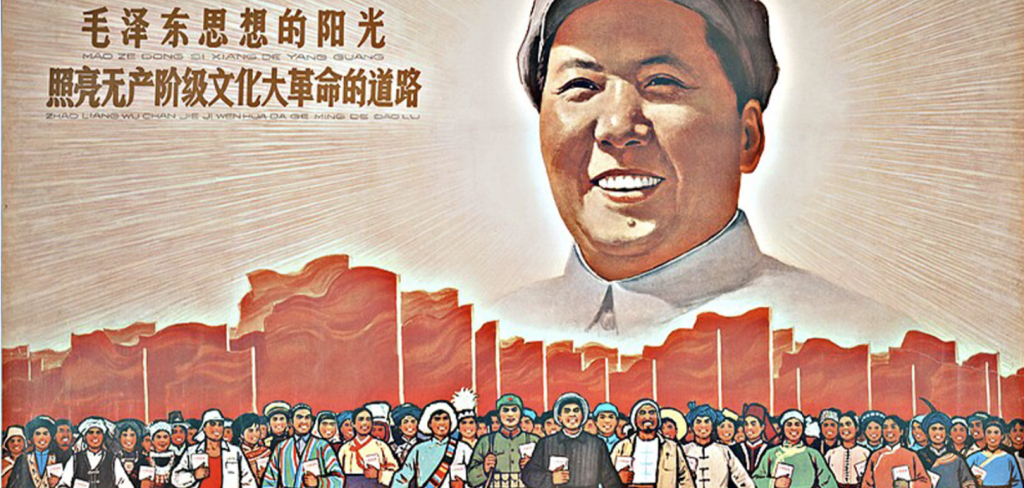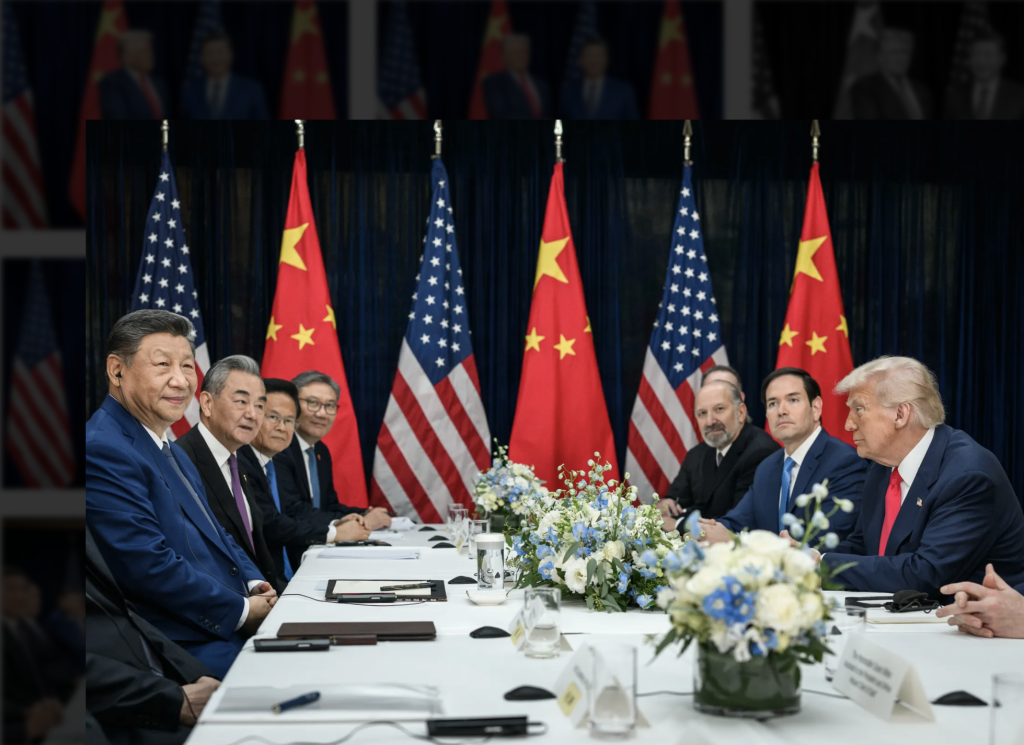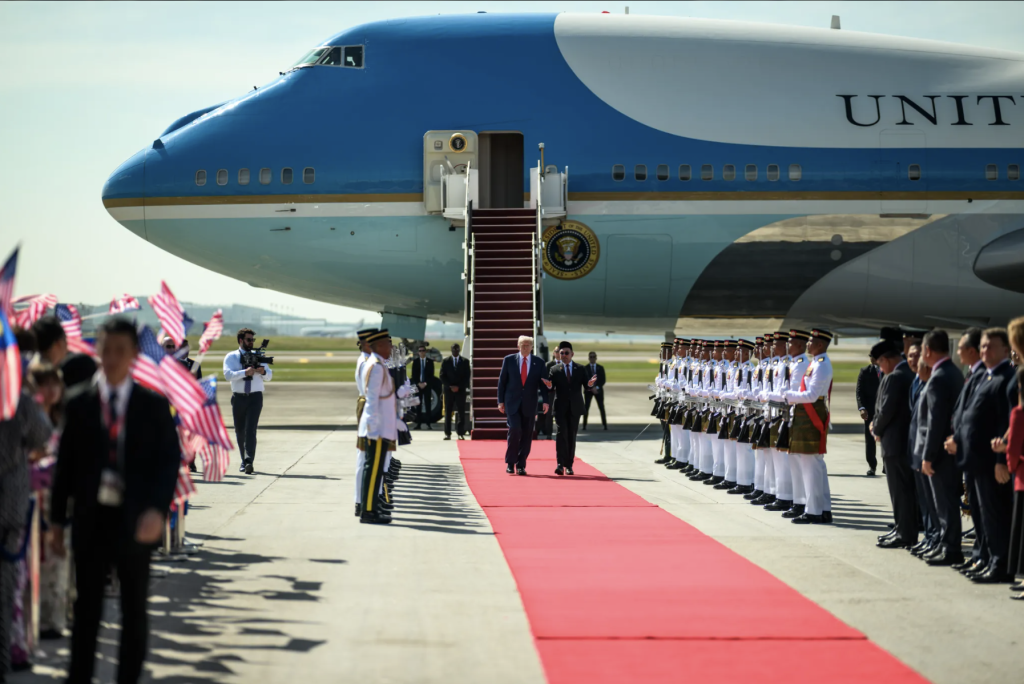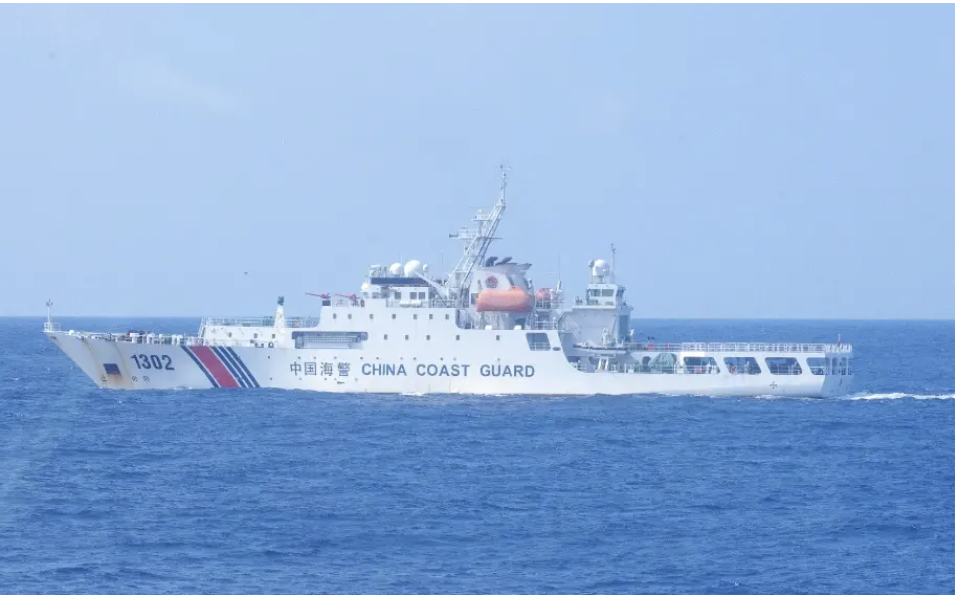Dai Bingguo: South China Sea Between Chinese and US Think Tanks
Below is the speech given by Dai Bingguo at the China-US Dialogue on the South China Sea Between Chinese and US Think Tanks. The event was organized by the Carnegie Endowment for International Peace on 5 July, 2016 in Washington D.C.
I am delighted to attend the China-US dialogue on South China Sea between Chinese and US think tanks jointly organized by the Carnegie Endowment for International Peace and Chongyang Institute for Financial Studies at Renmin University and meet with old and new friends. I would like to take this opportunity to thank both organizations for putting this dialogue together and my sincere thanks go to all of you here who have for long cared for and supported the development of China-US relations.
I became honorary president of the Institute of International and Strategic Studies at Peking University after retiring from government. In this sense, I can also be counted as a think tank scholar. I very much look forward to having candid and in-depth exchanges with all of you for mutual enlightenment.
Since the door of communication between China and the US opened more than 40 years ago, China-US relations have come a long way despite twists and turns and produced tremendous and extraordinary outcomes. This has not only benefited the people of China and the US,but also the whole world. Fast growth of relations between these two major countries in a short span of 40 years can be described as nothing short of a miracle in the history of major-country relations.
Three years ago,in June 2013, President Xi Jinping and President Obama held a successful meeting in Annenberg, Sunnylands. Since then,guided by the strategic consensus of no conflict, no confrontation, mutual respect and win-win cooperation,the two countries have continued to make important progress in the building of a new model of major country relations. China and the US have joined hands in promoting progress in a wide range of fields in bilateral relations and addressing major issues bearing on mankind’s future and destiny. Their trade volume and two-way investment have both scaled new heights. The two countries have stepped up macro-economic coordination which effectively facilitated world economic recovery and growth. China and the US have signed 3 joint statements on climate change, playing a crucial leading role for reaching the Paris Agreement on climate change. The two sides continued to broaden practical cooperation in military-to-military, law-enforcement, energy, and cultural and people-to-people exchanges. They have conducted close coordination and cooperation on international and regional hotspot issues and major global issues such as Iranian nuclear issue, Korean nuclear issue, Syria, Afghanistan, peacekeeping, international development and global public health. Such cooperation has benefited both countries, and bolstered international confidence in the continued growth of China-US relations.
China and the US are two major countries with very different histories,cultures,social systems and values and at different levels of development. As such, it is only natural that they would encounter differences and challenges in their relations. What’s important is to increase strategic communication in a candid way and handle and manage differences in a constructive manner. Furthermore, we should endeavor to transcend differences by focusing on and expanding cooperation. The South China Sea could well have been an example of this approach.
For a period of time, the South China Sea which used to be a rather quiet place has become not so quiet. The situation there has heated up to a quite unusual degree,drawing extensive international attention. What has really happened there? I noticed that reports and comments on this issue tend to take a static view from a certain angle, and thus have not shown the full picture of the South China Sea issue. In my view, to study an international hotspot issue, it is necessary to seek truth from facts by fully considering the relevant international background, tracing the historical development, and thoroughly reviewing how the concerned parties have interacted on this issue. Only in this way can one see the whole picture, tell right from wrong and draw the right conclusion. In this vein, I would like to focus my speech on the historical facts of the South China Sea issue and China’s policy on this issue. And I will endeavor to view and handle the South China Sea issue from the perspective of China-US relations and explore ways to genuinely cool down this issue and restore calm to this part of the world.
1. Nansha Islands are China’s Integral Territory
Historical materials of China and many western countries corroborate the fact that it was the Chinese people who were the first to discover, name,develop and administer the islands in South China Sea, and that the Chinese government was the first to peacefully and effectively exercise continuous sovereign jurisdiction on South China Sea islands. During the Second World War, Japan illegally invaded and occupied China’s South China Sea islands, which were restored to China after the war. Pursuant to Cairo Declaration and the Potsdam Proclamation,which were cornerstones of the post-war international order, Japan shall return the stolen Chinese territory to China. Following the end of the war, China restored Taiwan, Penghu Islands, Xisha Islands and Nansha Islands illegally occupied by Japan.
Many of you were probably not aware of this, but China’s actions to restore the islands was supported by General Douglas McArthur. China’s military and government personnel were ferried by US-provided military vessels to Xisha and Nansha Islands to hold the restoration ceremony. After that, the US filed applications to Chinese authorities on Taiwan to conduct geodetic survey in some of Nansha Islands on many occasions.
All this shows that the return of Nansha Islands to China is part of the post-war international order and relevant territorial arrangements. For a long time since the end of the War, the US has recognized and in reality respected China’s sovereignty over Nansha Islands. China’s sovereignty over South China Sea islands, as part of the post-war international order, is under protection by the UN Charter and other international law. To be blunt, when the US states today that it does not take a position on issues of territory, it actually amounts to back-peddling and defiance of the post-war international order, which the US itself has participated in building.
There are sufficient grounds to state that on the South China Sea issue, China is completely at the receiving end of encroachments. For a long time, the South China Sea had remained trouble free and calm. But since the 1970s, the Philippines, Vietnam and other countries have illegally occupied 42 islands and reefs in China’s Nansha Islands by force, which gave rise to disputes over territory in these islands and reefs. Over several decades, the Philippines and Vietnam carried out large scale construction and deployed armaments on them and continued to take provocative actions at sea. These illegal occupations and provocations are violations of international law and the UN Charter, and should be universally condemned. The world can see that on the South China Sea issue, China is by no means a wrong-doer or trouble maker, but rather a victim. According to international law, China has every right to self preservation and self-defense. It possesses the ability to recover the above-mentioned islands and reefs. However, in the interest of regional peace and stability, China has all along exercised enormous restraint, and sought peaceful settlement through negotiations. In recent years, China has taken actions only as compelled response at a minimal level to unbridled encroachments by certain countries on China’s rights and interests. Stand in China’s shoes for a moment, if it was the US who was challenged with such provocation, it would have long resorted to force to recover the illegally occupied islands and reefs.
2. China remains committed to peaceful resolution of disputes in the South China Sea through negotiations and consultations with countries directly concerned.
The Chinese government was the first to propose and has consistently followed the position of “shelving disputes and pursuing common development.” Its consistent position on the South China Sea issue includes the following three elements:
–Disputes should be settled peacefully through negotiation and consultation, and managed through rules, norms and operating mechanisms;
–Shared interests should be expanded through joint development and cooperation;
–Freedom of navigation and overflight should be upheld and peace and stability maintained.
These are both China’s basic policies and solemn pledges on the South China Sea issue. For the past several decades, the South China Sea region has maintained stability on the whole, and the relevant disputes have been kept under control. Southeast Asia has been able to achieve robust growth, and is seen as an example of peace, stability and prosperity and a magnet of cooperation in the eyes of many countries and regions. This is a great contribution China and its neighbors have made to the international community.
As the biggest coastal country of the South China Sea and a country dedicated to peaceful development, China sees peace and stability of the South China Sea as bearing on its vital interests. That is why China will never resort to force unless challenged with armed provocation. Despite the negative impact of factors both within and outside the region, China has not lost confidence and will stick to its policy of seeking peaceful settlement through bilateral negotiation and consultation, for the following reasons.
First, peaceful settlement of disputes through negotiation and consultation best reflects adherence to international law and the basic norms of international relations. According to the UN Charter and the Declaration on Principles of International Law, negotiation is the primary way for peaceful settlement of international disputes. The UNCLOS stipulates that countries concerned should settle maritime delimitation disputes through negotiations as the first recourse, and China and ASEAN countries also made such solemn commitment in the DOC. The fact is, China has benefited from the existing international order, and has firmly observed and upheld such order. China will continue to honor its due obligations, earnestly fulfill international and regional responsibilities, uphold the integrity and authority of the UNCLOS and other international law, and safeguard the rule of law.
Second, to settle disputes peacefully and through negotiations has been a successful practice of China in implementing international rule of law. Back in the 1950s, China has proposed addressing historical boundary issues through consultation under the Five Principles of Peaceful Co-existence. In the following decades, China has resolved its boundary questions with 12 out of 14 land neighbors through negotiations. They have surveyed and demarcated around 20,000 kilometers of boundaries, about 90% of China’s land boundary. China and Vietnam have delimited maritime boundary at the Beibu Gulf through negotiation. Of all boundary talks, those between China and Russia lasted for over 40 years, between China and Vietnam on land boundary over 30 years, and on Beibu Gulf over 20 years. I personally have participated in some of the boundary talks, and I believe that peaceful negotiations can best reflect countries’ own will and sovereign equality and have unique strength and efficacy in addressing complex territorial and maritime disputes. There is no reason why disputes in the South China Sea cannot be resolved through peaceful negotiations.
Third, peaceful settlement of disputes through negotiation and consultation is the only viable way to manage and resolve the South China Sea issue. The truth is, the parties concerned in the South China Sea issue have all along been working in this direction, which is also a clear provision in the DOC. The parties have established mature and effective mechanisms to this end, and the COC consultation has been making notable progress. Despite all this, the Philippines went on a pervert course of initiating arbitration without prior consultation with China. This is nothing but an act of imposition by the Philippines on China, and a culmination of the Philippines’ actions to advance its illegal claims. The truth behind the arbitration case is political intrigue, whereby certain countries have been deliberately provoking problems and stirring up tensions, eager to see turbulence in the South China Sea. The arbitral tribunal has no jurisdiction over this case. By making a so called “award”, it has wilfully expanded its power, which is against the UNCLOS and is null and void.
By taking a position of not participating in or accepting the arbitration, China is upholding its own rights and interests under international law and safeguarding the integrity and authority of the UNCLOS. We hope that the US side will take an objective and fair approach regarding the arbitration, rather than criticizing China for upholding the UNCLOS from the position of a non-state party. The final award of the arbitration, which will come out in the next few days, amounts to nothing more than a piece of paper. China suffered enough from hegemonism, power politics and bullying by Western Powers since modern times. The Versailles peace conference at the end of World War I forced a sold-out of Shandong Province. The Lytton Commission, sent by the League of Nations when Japan invaded China’s northeast provinces, only served to justify Japan’s invasion. Even the US-led negotiations on San Francisco Peace Treaty excluded China. These episodes are still vivid in our memory. That is why China will grip its own future on issues of territorial sovereignty, and will never accept any solution imposed by a third party.
III. The situation in the South China Sea must cool down.
The temperature of the South China Sea is now high enough. Some people even clamored for “fight tonight”. If such momentum went unchecked, accidents could happen and the South China Sea might sink into chaos and so might the entire Asia. Should that happen, it will be countries around the South China Sea, the Asian countries and even the US itself that will suffer. We must not let this happen, and not allow Asia to become another West Asia and North Africa. Anyone intent on fueling the flames and unleashing disastrous outcomes will be held accountable by history.
Cooling down temperatures in the South China Sea requires concrete efforts by all countries concerned.
First, the urgent priority is to stop the arbitration case initiated by the Philippines. If the tribunal insisted on its way and produced an “award”, no one and no country should implement the award in any form, much less to force China into implementation. And the Philippines must be dissuaded from making any further provocation. Otherwise, China would not sit idle.
Second, China and the US have neither disputes over even one inch of territory nor fundamental clash of interests in the South China Sea. The South China Sea issue should not be allowed to define China-US relations. Rather, this issue should be put in perspective against larger bilateral relations and be transformed into an area of cooperation rather than arena for confrontation. We must forestall undue disruptions or damages to the overall China-US relations as a result of differences over this issue. The people of China and the US will not forgive us, if we let the basically sound China-US relations cultivated by both sides over the past forty years be ruined by mis-judgment and mishandling over this issue.
I have made China’s position and views clear. Let me conclude with a few more personal observations.
First of all, even if the US is unable to go back to its position of recognizing China’s sovereignty over the Nansha Islands, it should honor its stated position of not taking sides on issues concerning territorial disputes. If the US is truly committed to peace and stability in the South China Sea and the wider Asia-Pacific and a rule-based order, it should judge the issue on its merits, respect facts, oppose or restrain provocations by certain countries against China and encourage countries directly concerned to settle the disputes peacefully through negotiation and consultation and implement the DOC fully and effectively.
Second, one should not be too ready to frame the South China Sea issue as a strategic issue or interpret and predict China’s behavior by drawing from western theories of international relations and history. It would be nothing but baseless speculation to assert that China wants to make the South China Sea an Asian Caribbean Sea and impose the Monroe Doctrine to exclude the US from Asia or that China is trying to compete with the US for dominance in the South China Sea, Asia and even the world. Unlike traditional western powers, China, an oriental civilization that goes back five thousand years, has distinctive culture, values, political thinking and view of the world. For China, the South China Sea issue is all about territorial sovereignty, security, development and maritime rights and interests. It is all about preventing further tragic losses of territory. China’s thinking is as simple as that. And there is no other agenda behind it. We have no intention or capability to engage in “strategic rivalry” with anyone. We have no ambition to rule Asia, still less the Earth. Even in the context of the issue in question, we have never claimed we own the entire South China Sea. We only have one ambition, which is to manage our own affairs well and ensure a decent life and dignity for the nearly 1.4 billion Chinese people. China’s right to rise peacefully and deliver a better life for its people should not and will not be taken away by anyone.
Third, the US’s heavy-handed intervention in the South China Sea issue needs to be scaled back. There is deep concern about the US continued reinforcement of its military alliances in the Asia-Pacific and forward deployment of its military assets. Since last year, the US has intensified its close-in reconnaissance and “Freedom of Navigation” operations targeted at China. The rhetoric of a few people in the US has become blatantly confrontational. How would you feel if you were Chinese and read in the newspapers or watch on TV reports and footages about US aircraft carriers, naval ships and fighter jets flexing muscles right at your doorstep and hear a senior US military official telling the troops to be ready “to fight tonight”? Wouldn’t you consider it unhelpful to the US image in the world? This is certainly not the way China and the US should interact with each other.
Having said that, we in China would not be intimidated by the US actions, not even if the US sent all the ten aircraft carriers to the South China Sea. Furthermore, US intervention on the issue has led some countries to believe that the US is on their side and they stand to gain from the competition between major countries. As a result, we have seen more provocations from these countries, adding uncertainties and escalating tensions in the South China Sea. This, in fact, is not in the interest of the US. The risk for the US is that it may be dragged into trouble against its own will and pay an unexpectedly heavy price. Hopefully, the countries, whose recent course of action has been driven by reckless impulse, will engage in some cool-headed thinking and realize that China has been living alongside them peacefully as a friendly neighbor for several thousand years. Neither had this neighbor invaded anyone nor interfered in any country’s internal affairs. Neither is this neighbor pursuing any regime change nor building confrontational political or military blocs. All China’s endeavors are focused on protecting its sovereignty, security and development interests and it has no intention to seek dominance or hegemony. Those countries will eventually see that it is the friendly China that will remain their neighbor for generations to come instead of some faraway superpower.
Fourth, China and the US need to find ways to manage their differences constructively. As I said, the South China Sea issue boils down to disputes between China and a few other littoral states. Given that these disputes are not going to be settled any time soon, the key question is how these disputes should be managed pending final resolution. Should parties provoke each other over these disputes, aggravate tensions and encourage confrontation? Or should they downplay the disputes, shelve their differences and expand cooperation? The answer is apparent. China has all along been committed to resolving the disputes peacefully through negotiation and consultation. Even though the South China Sea is clearly not an issue between China and the US, China is willing to maintain communication with the US on maritime issues and work with the US and all other parties to keep the situation under control, considering our shared interest in peace and stability in the Asia-Pacific. Our two sides may work together to find ways to jointly promote regional peace and stability through constructive dialogue on matters such as regional confidence-building, effectively managing disputes and advancing maritime practical cooperation.
Fifth, China and the US need to expand their positive maritime agenda. Both countries support freedom of navigation and overflight. As long as the US does not use that as a pretext to challenge China’s sovereignty and security interests, the two countries can cooperate on a global level to safeguard such freedom. Closer cooperation is also called for in a wide range of ocean-related fields such as marine environmental protection, marine science and research and maritime law-enforcement to give a stronger boost to China-US interaction at sea.
I was born at the height of the Second World War, and as a 75-year-old man, I either lived through or witnessed the evolutions of relations between some major countries. I have studied the Korean War, Vietnam War and Iraq War and how these wars took a heavy toll on the US. Since the turn of the century, I had the further privilege to chair China’s strategic dialogues with the US and some other major countries, which were of great depth and quality and helped produce common thinking between our two countries on building a new model of major-country relationship. I love my country and people and have nothing but profound goodwill towards the American people. I wish for the best of China-US relations and for both our countries. We must work together to avoid strategic mistakes pushing us into conflict or confrontation. Some of my remarks today might sound a little bit harsh, but I said them with the best of intentions. You may consider them words spoken from the heart of a friend of the US.
Wang Anshi, a famous Chinese poet who lived in the Northern Song Dynasty wrote, “We should not be afraid of the clouds blocking our view, because we already are at the highest elevation.” It means that only by adopting a strategic vision and minimizing distractions can one understand where the trend is moving. In a globalized world full of opportunities and challenges, as the biggest developing and developed countries and the world’s two largest economies, China and the US shoulder more common responsibilities and face more common challenges in driving world economic recovery and promoting international peace and security. There is so much potential of cooperation yet to be tapped. What we need is not a microscope to enlarge our differences, but a telescope to look ahead and focus on cooperation. Both Chinese and Americans are great nations with insight and vision. As long as the two sides work for common interests, respect each other, treat each other as equals, have candid dialogue, and expand common ground, China and the US will be able to manage differences and find the key to turning those issues into opportunities of working together. I have no doubt that China-US relations will embrace a great future.
To conclude, I wish the dialogue a full success.
The Chinese version can be read here.








